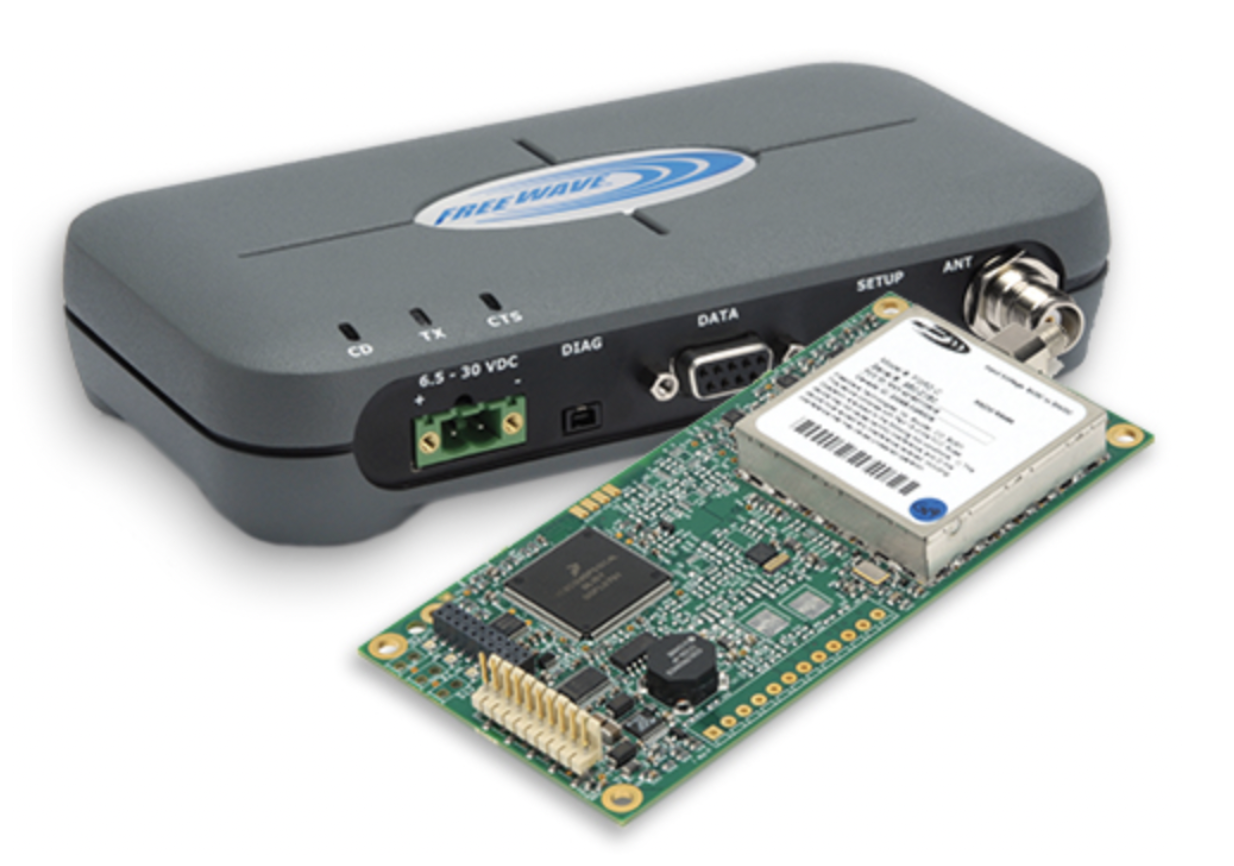Freewave FGR2 Radios

Freewave radios are designed for seamless integration into networks that require reliable link performance and support low power, long range machine-to-machine communications. Freewave radios transfer data in noisy, challenging environments covering over 60+ mile distances. By utilizing Frequency Hopping Spread Spectrum (FHSS) technology, Freewave provides an alternative to expensive Wi-Fi bandwidth, cellular or fiber.
Frequency-hopping spread spectrum (FHSS) is wireless technology that transmits radio signals by rapidly changing the carrier frequency among many distinct frequencies in a large spectral band. The frequency band is divided into sub-bands and signals “hop” their carrier frequencies among the sub-bands in a predetermined order. The “hopping” frequencies are difficult to intercept and interference at a specific frequency will only last a short time.
FGR2 Plus Series 900 MHz industrial radio for Ethernet and serial data communications features a combination of serial and switched Ethernet ports. It is offered as a board-level product and in a ruggedized enclosure. It is fully compatible with the FGR2 family of radios and allows for the transition from serial to Ethernet communications without replacing existing wireless data communication infrastructure. The FGR2 Plus Series radio can operate as a gateway, repeater or endpoint and also, as a simultaneous repeater and endpoint. It can operate up to 60 miles with clear line of site and has the ability to extend that distance through repeaters. 128-bit and 256-bit encryption options are available. The FGR2 Plus Series radios are Class I, Division 2 certified for operating in the temperature range of -40 degrees Celsius to 75 degrees Celsius. They are low power consuming, making them ideal for battery, solar and DC applications.
Common Reasons That Cause Radio Communication Failure
Radio communication is one of the most common ways to transmit data from one location to another, especially in situations where the distance between the two locations becomes too far to use some type of transmission wire. Because using industrial radios is so common, it is not unusual to encounter different problems when trying to communicate with different locations. Here are some of the most common reasons that communication issues may occur:
Configuration of the Radio
There are different configuration settings depending on the type of radio being used. For instance, is it an Ethernet radio or a serial radio. Other configuration settings that can potentially cause issues might be related to security settings on the radio, whether it is a master or slave radio, frequency range and many other factors.
Radio Frequency Impairments
One of the of the most common impairment issues is Electromagnetic Interference (EMI). EMI is generated from non-radio equipment operating near radio communication hardware. The electromagnetic field generated from this equipment can have a negative impact on the reception and transmission of radio signals. Another source of frequency impairment is improper cable selection, which can degrade the signal or possibly limit the power of the radio signal.
Improper Installation Methods
Improper installation of radios and antennas can lead to communication failure. Common installation mistakes include: loose cable connections, installation of damaged cables, running data cables in line with power cables and many other issues. When installing antennas, it is important to make sure that there is good line of sight and to limit or eliminate any potential obstructions that could cause communication failure.

